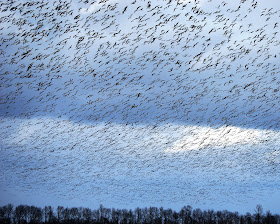The winter weather in the Mid-South is never unbroken. It is not uncommon in this region for there to be periodic breaks in the winter weather. A few days ago, snow covered the ground. Then, daytime temperatures rose into the 50s and 60s, allowing the bees to break from their winter cluster and make cleansing flights. Scout bees constantly search for sources of nectar and pollen. Usually the first that they find is skunk cabbage, a plant that often emerges through the snow. Nothing else seems to be in bloom. I have not found any dandelion blooming yet. These hearty wildflowers are the first plants to bloom in great numbers. Still, the warm days give beekeepers a chance to check on the wintering bee colonies. The first check of the year is never a thorough hive inspection, just a check on the status of the hive. Much can be told by watching the entrances to the hives. Healthy hives show much activity. Hives with only a few bees entering and leaving the entrance may be dead colonies that are being robbed of their remaining honey stores. Hives with considerable activity at the entrance, especially guard bees fighting with bees trying to enter, may also be losing honey stores to robbers.
My January bee hive check involves lifting the covers and looking for live bees inside the hives. Often the winter cluster of bees is located on the sun-warmed south side of the hive, like the hive shown in today’s photo. With the hive facing east, the cluster is centered over frame positions seven through 10. Next, it is important to check the amount of honey that remains in the hive. This can be done by lifting the rear of the hive. If it feels light, emergency feeding is needed to sustain the bees until dandelions come into bloom. While the warm weather gives both the bees and beekeepers a needed break, precious winter stores are consumed by the bees’ flight.
--Richard









